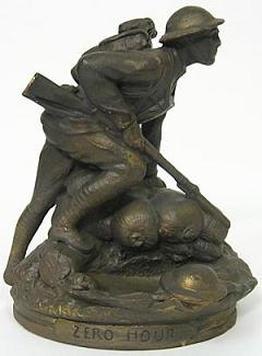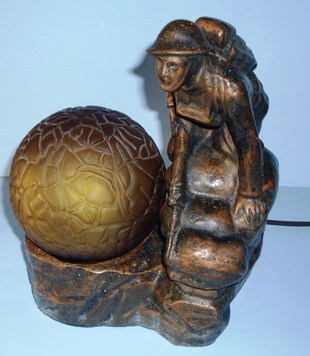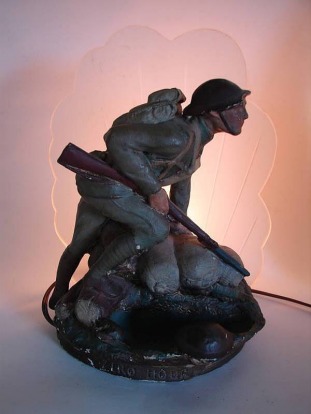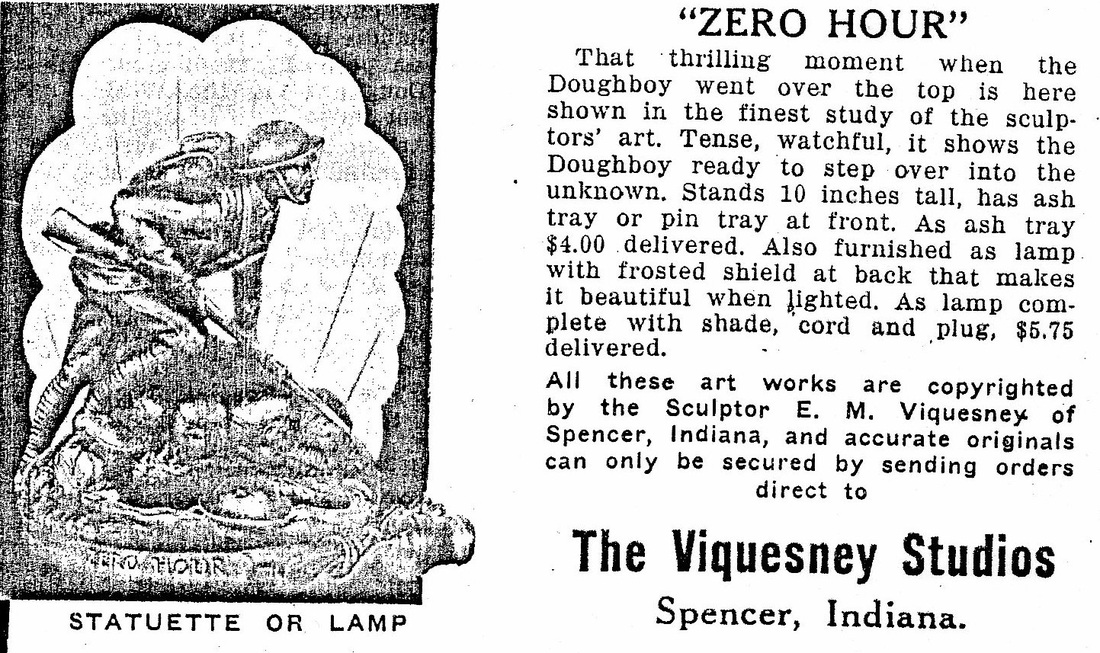1930: "ZERO HOUR"
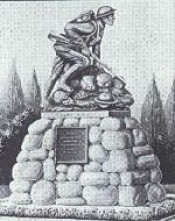
After his success with his "Spirit of the American Doughboy", Viquesney went on to produce other WWI tributes, hoping they too would sell as outdoor memorials as well as in miniature. The drawing at left shows how the artist envisioned his "Zero Hour" as a full-scale public monument, but no examples of it are known.
"Zero Hour" was available as a plaster miniature, both as a statuette and in at least two versions as a table lamp. Examples are rare.
The figure is thought by some to be derived from one of the figures from Viquesney's earlier United States Infantry Association Trophy, but the positioning of the legs is reversed (right knee forward on "Zero Hour"; left on Infantry Trophy).
"Zero Hour" was available as a plaster miniature, both as a statuette and in at least two versions as a table lamp. Examples are rare.
The figure is thought by some to be derived from one of the figures from Viquesney's earlier United States Infantry Association Trophy, but the positioning of the legs is reversed (right knee forward on "Zero Hour"; left on Infantry Trophy).
Below: Another version of the "Zero Hour" lamp, this one with a cloud-shaped art-deco glass diffuser to give a dramatic backlighting effect. Viquesney featured it in one of his ads (below), and the same diffuser was used in a religious piece, "Mother" (1929). The lamp version above with the faux crackle-finish globe shows much less detail than either the statuette or art deco lamp, and bears no title, signature, or copyright. It was probably produced as a cheaper alternative to the others.
|
Although E. M. Viquesney created several designs of his miniature Doughboy with the hope this variety would increase sales, none of them, including "Zero Hour", ever came close to the thousands of the miniature "Spirit of the American Doughboy" statuettes sold throughout the nation. As you might expect, these other versions are quite rare, but not all that valuable, as not that many people even know about them.
|
